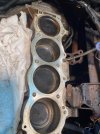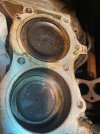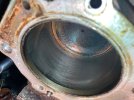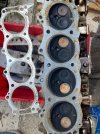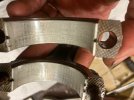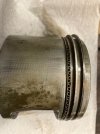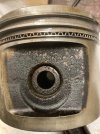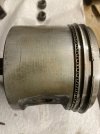roule
Active Member
Hi , new post for my RRC EFI 3,9 with the good title 
I have a question and a concern about a vertical mark on one of my cylinders, it is not a scratch, it is extra thick, as if a weld had been made. My compressions are correct (12,5 bars) and the engine is not knocking. Any idea what it could be? A part of the camshaft that would have come loose and been crushed by the piston?


I have a question and a concern about a vertical mark on one of my cylinders, it is not a scratch, it is extra thick, as if a weld had been made. My compressions are correct (12,5 bars) and the engine is not knocking. Any idea what it could be? A part of the camshaft that would have come loose and been crushed by the piston?
